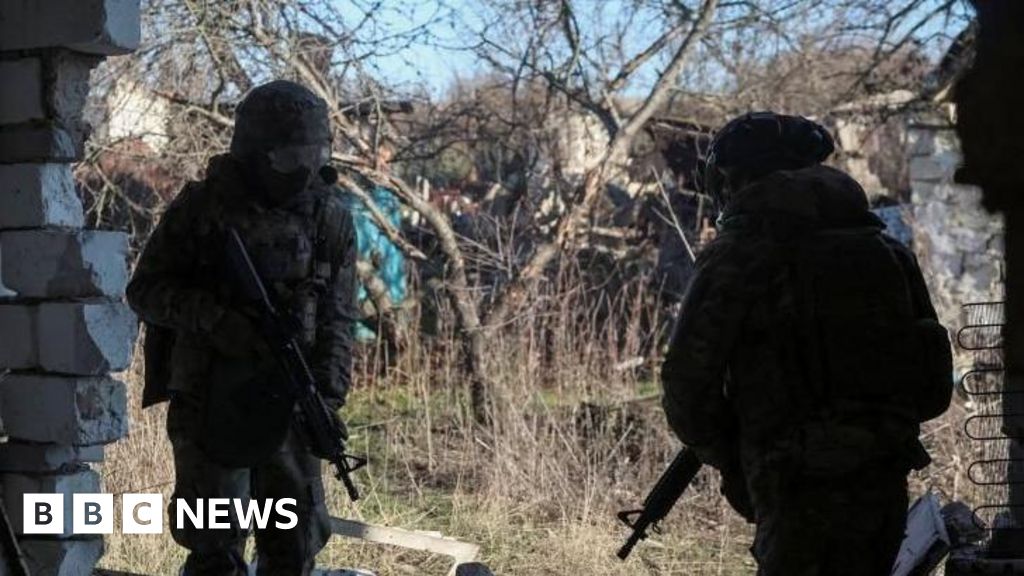(0:00 - 1:08)
Canada has, for the last several years, been gripped by an overwhelming national guilt over supposed genocide at Indian residential schools, with the claims of mass graves of murdered children being widely promoted by mainstream media and the government and unquestionably accepted by many Canadians. But what if the entire narrative is false? Brian Giesbrecht, a retired Manitoba court judge, has investigated these claims in depth, from the real history of residential schools to who would benefit from this false narrative, and he has written extensively on the subject. Brian joins me today to reveal the facts, the facts about what conditions at the schools were really like, from statements made by Indigenous people who attended them, the fact that not a single grave has actually been found, despite many attempts to do so, and the facts about where the 40 billion dollars that Trudeau's government has committed to truth and reconciliation is really going.
(1:09 - 6:50)
Brian, welcome to the show. I've invited you to this interview because of articles that you wrote and were posted at True North that reveal that you obviously know a great deal about the residential schools, the history of them, the whole narrative, and why we've been subjected to this idea of mass graves. And so I'm wanting you today to shed a lot of light on this, and I'd like to start by asking you to talk about the actual history of the schools, because people don't know, and once you do know the history, I think that goes a long ways towards already calling into question this narrative.
Well, residential schools were schools, and that's why they were set up. The notion, the idea that Indians, particularly the Plains Indians, had to have access to schools and education is as old as Canada, and it was one of John A. Macdonald's particular goals to provide education. And when the treaties were signed across the West and North, beginning in about 1870, the treaties all had a provision in them that said that if an Indian band wanted a school, the government would provide the school, and they ended up providing teachers and other assistance, even though that wasn't in the treaties.
Now, that was not a provision that was forced on the Indian chiefs who were signing the treaties, because they wanted exactly the same thing. For obvious reasons, the children had to be able to speak English and learn to read and write and survive in a modern world. We should remember that around that time, things were very, very bad for the Plains Indians.
The buffalo were disappearing, and disease was ravaging communities. So, having schools was just a very common sense and very natural type of thing. And indeed, day schools were set up across the West on the various Indian reserves.
The problem was that they didn't work, and there were all kinds of reasons for that, but the main one is that they weren't part of Indian culture. As a matter of fact, some of the Indian languages actually, the phrase going to school was in their language to sit. In other words, to have a child sit in the classroom all day.
So, it was alien to the culture, but it was also very difficult, even impossible for many of the parents to do, even if they wanted to have their child in a school regularly. For instance, if you're out on the trapline for the winter, what do you do? How do you possibly send your child to school? Anyways, there's a long story there, but the long and short of it was that the schools weren't working very well. The children, even when they were enrolled in these schools, often attended very sporadically.
So, the idea was that they should have something better. The federal government, for its part, wanted to create an indigenous elite, educated elite. They wanted chiefs to be educated.
They wanted more educated professional people. And the churches wanted converts. That's what the churches wanted, and we have to remember that at time, the division between Catholic and Protestant, that was very competitive.
So, the churches wanted people for their church, and by that time, most of the parents were already Christian. They were either Catholic, the North was mainly Catholic, and the South more Protestant. In any event, the federal government came up with the idea of establishing residential schools, boarding schools.
These were based on the American boarding school model, and the idea was that for parents who wanted their children to be enrolled in a school that would provide a very good education, or at least a better education than what they received in day schools, these schools would be available. Now, they were never designed to be for all indigenous people. At the height of enrollment, only one-third of status Indians even attended these schools, but for select people, the parents who were willing to send their children away to a residential school, because some of these schools were actually quite far from the reserves, particularly for Northern parents.
In some cases, they were right on the reserves or next to them, but in some cases, it meant sending your child away. Not that many parents chose that option, but at least in those initial years after the program was started, it was started in 1883, most of the kids who were attending the residential schools were actually the sons and daughters of the, particularly the sons of the chiefs and the leading people, and the schools were very well received. If you look at the reports during that time, the parents were quite pleased with the fact that their kids were getting an education.
(6:50 - 11:53)
In fact, most of the leaders, the indigenous leaders from at least the earlier years and later on as well, had gone to residential schools. The reason is that they did provide a superior level of education, but one of the problems with the schools is that they were increasingly used as child welfare centers. I won't go into a lot of detail about that, but the federal government never did have a child apprehension procedure, a child welfare agency component like the provinces by that time, like children's aid societies, where if a parent was not properly looking after a child, either because they couldn't or they wouldn't, a children's aid society would be able to take the child.
The federal government had no such thing, so they chose to use residential schools for children from dysfunctional families, and that has caused a great deal of difficulty over the years because you had some extremely damaged children from dysfunctional homes, and they were placed in residential schools and mixed in with the other population of children from stable backgrounds, and that has caused a great deal of difficulties. But anyways, that in a nutshell is a little history of residential schools, but the important thing is that only a small fraction of Indian children ever went to residential schools, and parents were not forced to send them. Basically, a Catholic parent would decide that they wanted their child to be educated at a Catholic home, a Protestant parent, be it Methodist or Anglican, etc., would decide that they wanted their child to be educated at a Protestant school.
They signed an application. In some cases, the applications were refused because the schools were full or whatever, but this notion that every child was attending a residential school is false, and it's equally false that the parents were forced to send their children to school. That was not the case.
They were not forced. This was a choice of the parents. Most parents did not choose to send their children to residential schools, so that is a sort of a nutshell history throughout.
There is a major stock market crash coming that will rival the crash of 1929, but there is a way to not only protect your wealth but profit in the coming crash. The stock market chart today looks exactly like the charts prior to October 1929. Banks are disastrously over-leveraged, and several major U.S. banks have already failed, and the CDIC, the Canada Deposit Insurance Corporation, doesn't have nearly enough money to cover depositors.
If you have money in the stock market, it is time to get out. Governments and corporations around the world are buying up precious metals in record amounts because they know the coming crash will make their other assets nearly worthless. You can buy precious metals at wholesale prices through New World Precious Metals at premiums substantially below other Canadian brokerages, and you can even transfer savings in your RRSP tax-free.
To get more information, use the link below this video to contact New World Precious Metals. They will answer any questions you may have. You may also wish to contact Adrian Spitters, a personal financial consultant who successfully predicted the stock market crashes of 2000 and 2008.
You will find Adrian's contact information below as well. Finally, if you want more information on the coming crash and what you can do to protect yourself, your family, and your assets, see my most recent quarterly update with my team of financial experts at ironwillreport.com. By clicking the link below to contact New World Precious Metals, you will also be helping to support our efforts to bring Canadians the truth as we are an approved affiliate partner. Right, now there's been a claim made that 150,000 Native children were forced to go to these schools, but that is clearly a false narrative since, from what I've read, 150,000 is the approximate number of Native children who went to residential schools, so therefore it suggests that all 150,000 of them were forced.
But you put some real perspective in one of your articles on that term, forced. Please explain what's actually meant by it. Well, I suppose we were all forced to go to school.
(11:53 - 13:10)
If we want to say that a child not wanting to go to school is being forced, my parents forced me to go to school. The real question is, were Indigenous parents forced to send their children to residential schools? And as I've explained, the answer is no, they were not forced to send their children to residential schools. They had to apply for their child's entry.
Now, where the confusion comes in is, as I explained, the child welfare cases, these are cases where the parent was unable or unwilling to look after the child, and in those cases, the government in the form usually of the Indian age, back in the day, would decide to take that child out of the home for the child's own safety and then put the child into a residential school. So if you want to say, well, that child was forced to attend a school, that would be no different than today saying any child who was apprehended from their home, either by an Indigenous child welfare agency or any other agency, that they're forced. Well, of course, the agency is going to put that child in the school.
(13:10 - 16:10)
And that's what happened. The Indian agents and their equivalents used the residential schools as places to put children from extremely dysfunctional backgrounds. And when I'm saying dysfunctional backgrounds, that almost always refers to drinking in the home.
There was a virtual explosion of alcohol use to the 50s, 60s, and 70s. And as a result, many of the children were left in very dangerous situations. They had to be removed from the home, and residential schools, at least in the earlier years, were used for child welfare purposes.
But no, parents chose to send their child to residential schools, or they chose to send their child to a day school. They had to make one of those choices. And most chose day schools.
So there was a choice there. Now, before 1920, when compulsory school attendance laws came in for status Indians, they didn't have to make any of those choices. An Indian parent could decide that their child could just not go to school, and most children did not go to school, or else they were enrolled but attended sporadically.
So from 1883 to 1920, there were no school attendance laws whatsoever for status Indians, and only the parents who made a choice to send their child to residential schools by signing an application did so. After 1920, wherever a day school existed, an Indian parent could choose between a residential school or a day school. The only exception was if a day school was not available, in which case a residential school would have to be used.
So the force to attend is a narrative that the CBC has pushed ever since the TRC started to operate. It's a false narrative that they have been pushing. I don't know why.
And this is obviously something that people should know about. Right. Now, you've talked about the compulsory attendance for the native children coming in in 1920, and I'm referring to some notes from one of your articles where you were talking about Manitoba.
And it seems to me that when you look at the timing, it's fairly obvious that the government was simply trying to apply to them the same rules they applied to everyone else, because in Manitoba in 1916, that was when compulsory attendance for all children came in, excepting the native children. And it was only four years later when they made that attendance compulsory, obviously, in order to try to make sure that everyone was educated. But it seems very clear that they weren't forcing anyone, because as you said in one of your articles, as late as 1944, upwards of 40% of Indian children went to no school at all.
(16:11 - 16:23)
Yeah, exactly. The school attendance laws, there's a long history about why it took so long for school attendance laws to come into force in the prairie provinces.














Interesting interview, but where is the members version? Seems all I can access is the free version which is about 16:32
minutes long…